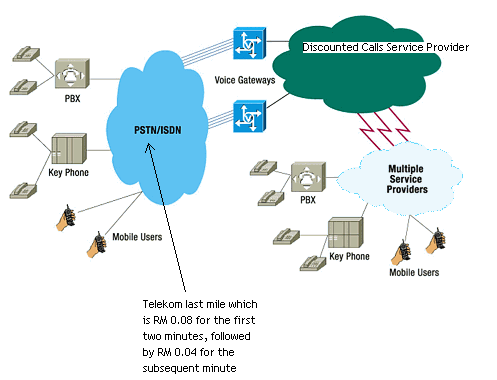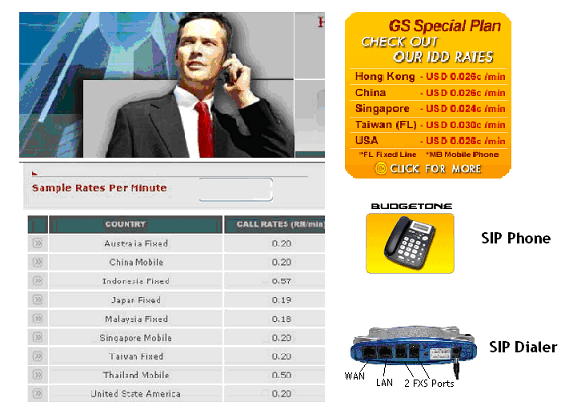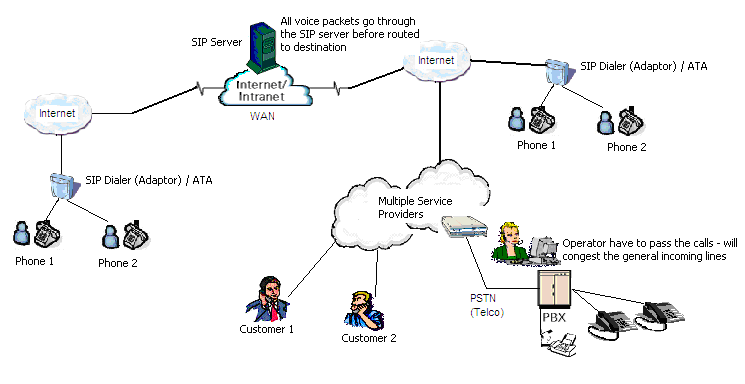Many Faces of VoIP Applications
Based on scenario in Malaysia
VoIP Solutions come with Free Download from the Internet
The earliest products worked exclusively via software, and users are both ends of the connection needed a computer running the software, an Internet connection, a sound card, and a USB microphone. The connection was often only half duplex, making the conversational experience more like taking on a two-way radio than on a telephone.
There are still many software-based VoIP products in use and these tend to be less expensive and some maybe even free installation. These programmes are such as Skype by Kazaa, MSN Chat and Yahoo Chat, to name a few. The programmes can be easily downloaded from the internet.
As the saying goes ‘there is no free lunch’, these programmes will come with adwares, which normally will open a back door for the spy wares to lurk into our computer. These spy wares will check our daily usage of our computer, the websites that we normally surf, our e-mails and our data information. If we do not handle these spy wares properly, they will later create loses in memory to our PC thus slowing down our PC, creating lots of pop up’s during our surfing the internet, and sometimes do cost a breakdown to our PC.



